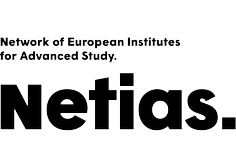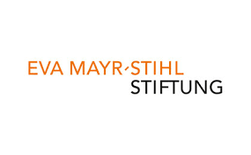Dr. Sebastian Baasch
Immunologie
Internal Junior Fellow
Oktober 2023 - Juli 2024
CV
How does cytomegalovirus, a highly prevalent herpesvirus, establish a lifelong infection without symptoms in the presence of a competent immune system, but causes detrimental disease in immunodeficient patients? Sebastian Baasch investigates the interaction of the immune system with cytomegalovirus using various approaches including host-pathogen fate mapping tools, spectral flow cytometry and next generation sequencing. He studied veterinary medicine at the University of Leipzig and worked at the Fraunhofer Institute for Cell Therapy and Immunology. He obtained his doctoral degree at the Institute for Immunodeficiency in Freiburg, where he focused on the role of the innate immune system in postnatal cytomegalovirus infections (2016-2021). His postdoctoral research at the University Medical Center Freiburg continues to interrogate the implications of a cytomegalovirus infection for the future health status.
Sebastian Baasch received the Fritz-Rupert-Ungemach (Faculty of Veterinary Medicine, Leipzig) and the prestigious Otto-Westphal Thesis Prize (German Society of Immunology, DGfI). He is a Fellow of the Hans A. Krebs Medical Scientist Programme (Faculty of Medicine, University of Freiburg – 2022-2024) and, moreover, guest lectures “antiviral immunity” at the Faculty of Veterinary Medicine in Leipzig.
Publikationen (Auswahl)
- Baasch, S., Henschel, J. & Henneke, P. (2023). Combined Host-Pathogen Fate Mapping to Investigate Lung Macrophages in Viral Infection. In Tissue-Resident Macrophages: Methods and Protocols (pp. 347-361). New York, NY: Springer US.
- Schwabenland, M., Mossad, O., Sievert, A., Peres, A. G., Ringel, E., Baasch, S., ... & Blank, T. (2023). Neonatal immune challenge poses a sex-specific risk for epigenetic microglial reprogramming and behavioral impairment. Nat. Commun., 14(1), 2721.
- Baasch, S., Giansanti, P., Kolter, J., Riedl, A., Forde, A. J., Runge, S., ... & Henneke, P. (2021). Cytomegalovirus subverts macrophage identity. Cell, 184(14), 3774-3793.
- Baasch, S., Ruzsics, Z., & Henneke, P. (2020). Cytomegaloviruses and macrophages—friends and foes from early on?. Front. Immunol., 11, 793.
- Kolter, J., Feuerstein, R., Zeis, P., Hagemeyer, N., Paterson, N., d’Errico, P., Baasch, S.,... & Henneke, P. (2019). A subset of skin macrophages contributes to the surveillance and regeneration of local nerves. Immunity, 50(6), 1482-1497.
FRIAS Projekt
Deciphering the cellular reservoir of CMV latency
Cytomegalovirus (CMV) is a beta herpesvirus that frequently infects infants worldwide within the first years of life via the respiratory tract. CMV shares millions of years of co-evolution with mankind and is therefore highly adapted to its host. Thus, after acute infection CMV is able to establish a latent state, in which no viral replication occurs. Phases of latency are frequently interrupted by re-activation and viral shedding. In immunocompetent individuals, initial infection and re-activation usually go unnoticed, while immunocompromised patients suffer from end organ disease, for example CMV pneumonia after stem cell transplantation.
Macrophages populate all tissues in the body, especially barrier tissues such as the respiratory tract. The lung resident macrophage population is highly heterogeneous, consisting of alveolar macrophages and subsets of interstitial macrophages. Together they orchestrate lung homeostasis. Due to their exposed localisation, alveolar macrophages are first responders in respiratory tract infections and represent main targets for pathogens.
We have recently discovered that after acute infection of the respiratory tract, mouse CMV (MCMV) predominantly infects alveolar macrophages. Subsequently, infected alveolar macrophages disseminate the virus locally. During later stages, hematopoietic stem cells, endothelial cells and macrophages are suggested to be involved in the maintenance of CMV. However, it is not clear, which cell type ultimately harbours CMV during latency.





